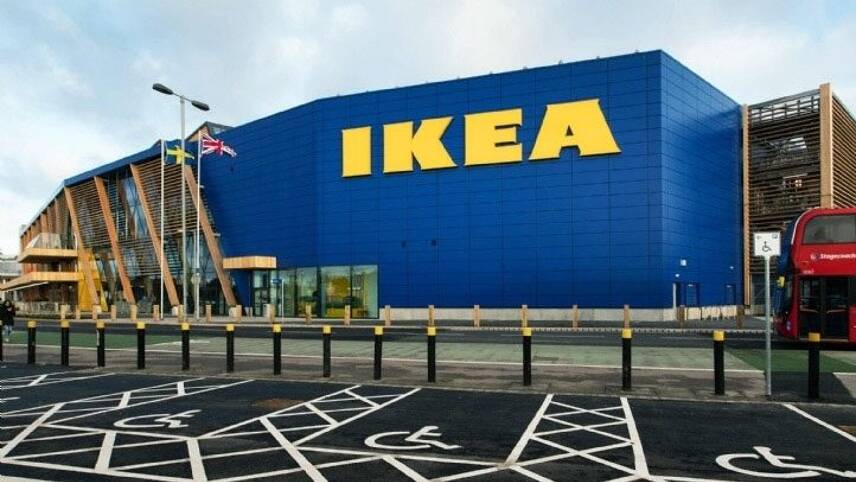Register for free and continue reading
Join our growing army of changemakers and get unlimited access to our premium content

Pictured: Ikea's store in Greenwich
The furniture retailer’s emissions data for 2021 was publicly revealed for the first time this week, in its latest sustainability report. The report charts progress towards all of the key pledges made by Ikea in 2018 through its ‘People and Planet Positive’ sustainability strategy.
Under that strategy, Ikea has committed to reducing and sequestering more emissions than the level generated by its operations and value chain. For reducing emissions, the retailer is aiming for a reduction of at least 50%, in absolute terms, between 2016 and 2030.
The report reveals that Ikea’s absolute emissions grew 15% in 2021 on 2020 levels. This has been attributed to Covid-19 restrictions easing and to the business growing.
There were year-on-year decreases between 2018 and 2019, and then a sharper decrease again between 2019 and 2020, as Covid-19 lockdown restrictions forced stores and suppliers to close in many markets.
Nonetheless, Ikea’s absolute emissions in 2021 were down slightly on 2016 levels. The firm’s absolute emissions in 2016 were 27.8 million tonnes of CO2e and, in 2021, they were 26.2 million tonnes of CO2e.
Ikea’s biggest source of emissions are the raw materials it uses, which accounted for more than half of its 2021 footprint. Other major contributors are the customer end-use of products and the manufacture of products.
In the report, Ikea states that it “has plans in place to reach its strategic goal” but that decarbonising the materials supply chain “will take longer than the [initiatives on] plant-based food and renewable energy”. To this latter point, Ikea achieved 100% renewable electricity for all owned factories, packaging facilities and distribution units in 2021 and is now running a new programme to support 1,600+ direct suppliers to switch to 100% renewable electricity.
Resources and nature
The report also details Ikea’s progress towards becoming a circular business, regenerating nature and improving biodiversity.
Ikea defines circularity as designing every product for reuse, refurbishment and remanufacturing; only using renewable or recycled materials and collaborating to launch circular solutions.
The report confirms that Ikea has now drawn up roadmaps to redesign every product and piece of packaging that requires it for circularity this decade. A roadmap for scaling new customer services like take-back and repair will be presented later in the year.
On materials, the report states that Ikea used 55.8% resources classed as renewable, and 17.3% certified as recyclable, during 2021. Particular progress was made with polyester, with 90% now certified as recyclable.
Moving on to the nature and biodiversity portion of the report, it confirms that Ikea’s wood use rebounded to pre-pandemic levels of 21 million round wood equivalent (RWE) in 2021. Around 14% of this was certified as recycled and the rest is FSC certified.
It also re highlights Ikea’s Forest Positive Agenda, launched in 2030. Among other commitments, the Agenda will require Ikea to reach a deforestation-free supply chain, increase its use of recycled wood and protect the rights and needs of forest communities globally.
Forests rose up the corporate sustainability agenda in 2021 for a variety of reasons, including the UN’s 15th Convention on Biological Diversity (CBD), reports of record deforestation in the Amazon and the new international forest treaty signed at COP26 in November.
Sarah George


Please login or Register to leave a comment.